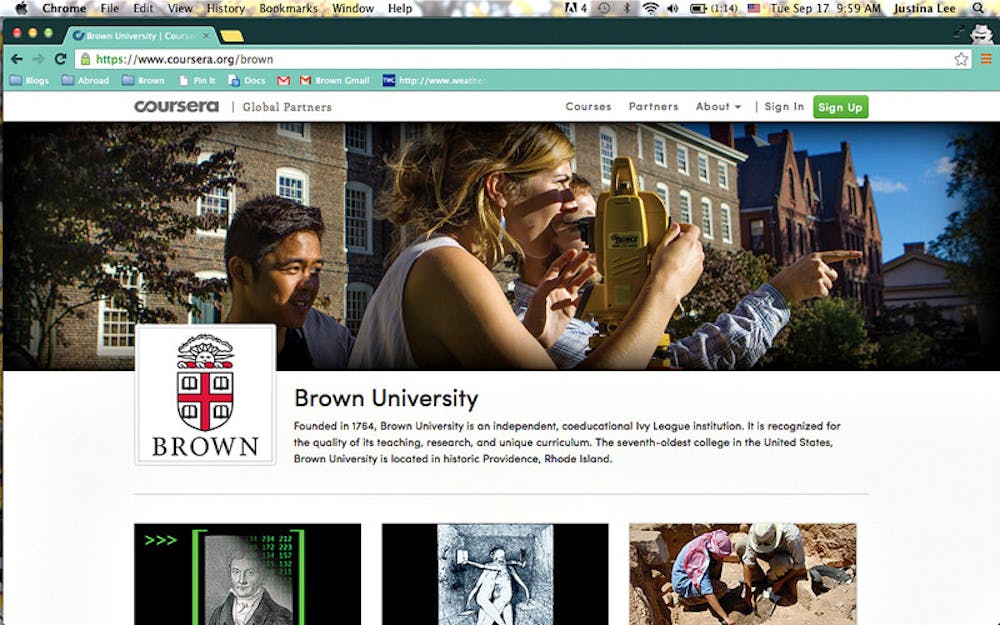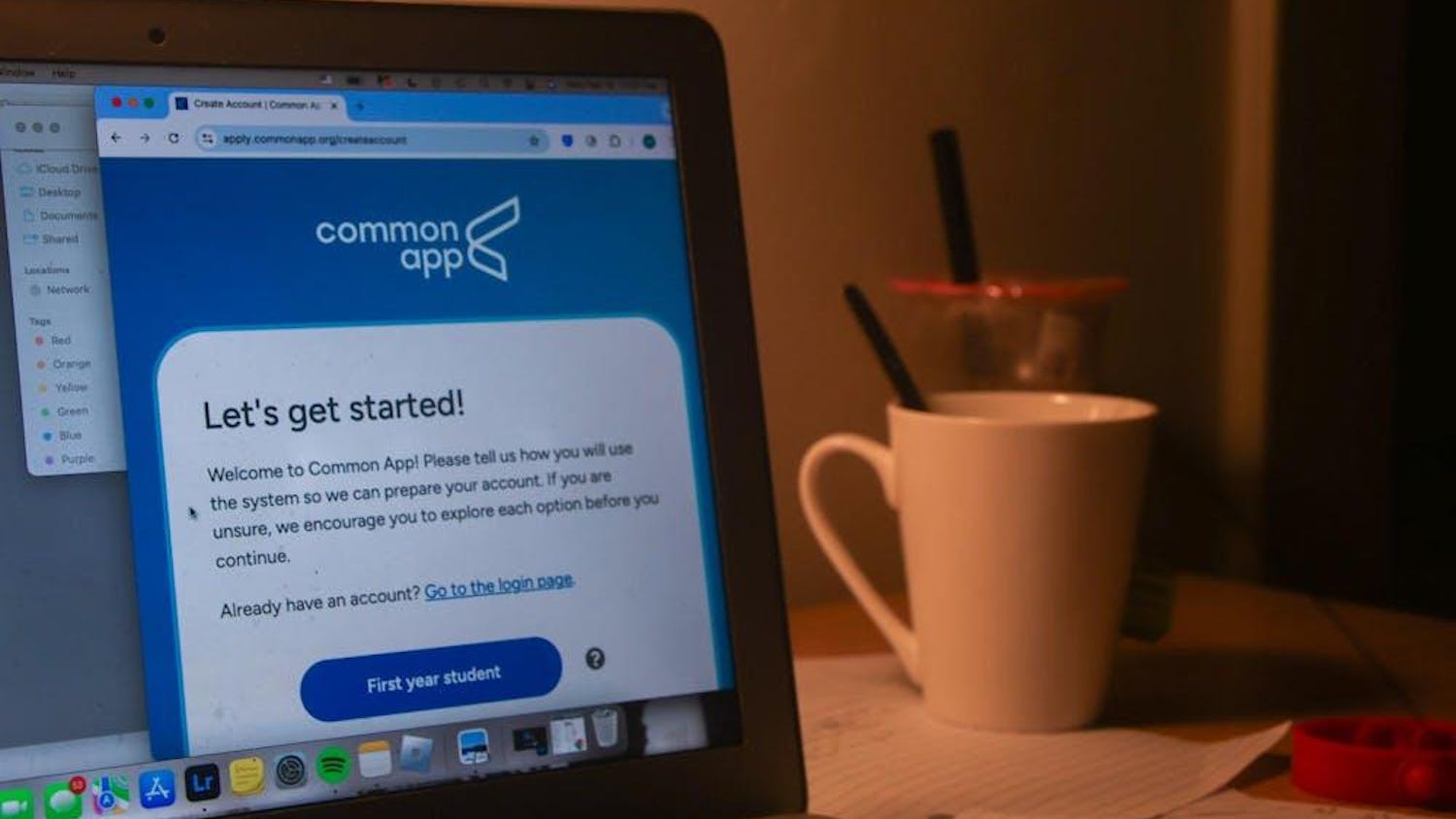Professors stepped out of the classroom and into computer screens this summer with a variety of online class offerings.
Through the learning platforms Coursera and Canvas, the University explored different methods of online education. Brown professors taught Massive Open Online Courses, also known as MOOCs, to virtual audiences on Coursera, while Elizabeth Taylor, senior lecturer in English, piloted “Introduction to Creative Nonfiction” with a group of 17 students on Canvas as Brown’s first online for-credit course.
MOOCs and small groups
Coursera facilitates global learning by offering free classes for students interested in mastering a subject and for adults interested in continuing their education, according to its website. Coursera connects professors from top universities to an online system of learning to reach students from around the world.
MOOCs have a similar structure to normal online classes, said Norian Caporale-Berkowitz ’12, a Coursera employee involved in Course Operations. Lectures for the week are released at specific times, and homework assignments have openings and due dates, he added.
Philip Klein, professor of computer science, volunteered to teach a MOOC on linear algebra. But Susan Alcock, professor of archaeology and classics, and Arnold Weinstein, professor of comparative literature, were asked by the University to participate in Coursera. These professors “had especially great track records for teaching,” Dean of the College Katherine Bergeron said. Online learning was a new module, and “we wanted to allow them to experiment radically with their own teaching,” she said.
“I tried to convey the 360 degrees of a Brown course,” Weinstein said. To demonstrate the conversation that usually occurs on campus, he gathered a small group of his previous students and taped discussions about the books he was teaching on Coursera. “Others were very impressed,” he said.
Teaching through Coursera, Klein said he learned new ways of presenting the abstract concepts of linear algebra that allowed a more tangible understanding of the subject.
Speaking to a smaller audience, Taylor facilitated her seminar-style non-fiction writing course by posting videos — usually shorter than five minutes — daily on Canvas. Designing Taylor’s course was “a daunting assignment, but something that we were really quite eager to do,” said Dean of Continuing Education Karen Sibley. Similar to the demands of a MOOC, the requirements of Taylor’s online class included assignments due on a weekly basis.
Taylor said she was surprised to feel more linked to her students online than in the classroom. She hosted Google hangouts with them and was able to respond directly via email to comments. “It felt more intimate,” she said.
Online conversations
Collaboration and communication between international students allows education to be globalized and students to experience the different cultures of their peers, Coursera Co-founder Daphne Koller argued in an article published by CNN.
After an assignment is posted, “the average response time is 22 minutes,” Caporale-Berkowitz said.
“I had not anticipated how provocative and vigorous online discussion would be,” said Weinstein, who taught “The Fiction of Relationship.” “It was just amazing to me the way ideas took route.”
Kathy Takayama, executive director of the Sheridan Center for Teaching and Learning, said Weinstein’s and Alcock’s courses “were exemplars in the way online courses can really create community and bring global perspectives and depth and breadth.”
Patrick Carey ’16, who took both Weinstein’s MOOC and Taylor’s Canvas course, said he enjoyed writing responses for each, and found it especially interesting to read responses from the international community through Weinstein’s course.
Evelyn Sanchez ’14, who took Taylor’s course, said the biggest difference between learning online and in the classroom were the discussions.
“You had to make every interaction you had meaningful,” she said. “It was the only way people got to know you, so everything we posted we tried harder to make better.”
Online grading
Due to the large population frequenting online courses, Coursera employs a system of peer grading for those assignments that cannot be checked electronically for correctness.
“If you write one, you grade one,” Weinstein explained. Students grade their peers’ work on a zero-to-two scale based on a provided rubric, he added. A grade of “two” acknowledges distinction.
Courses offered on Coursera will not be awarded credit at the University, Bergeron said. But students who took Taylor’s online course will receive the same amount of credit that they would if they took the same course during the semester.
“The online course was as rigorous if not more rigorous,” Taylor said.
Sanchez said she expected the online course to be easier than it would be in the classroom and was pleasantly surprised when it was not.
“I learned how to manage my time,” she said, adding that it was harder to keep up with the work without scheduled hours to attend classes.
The future of online learning
Online learning is an experiment in which the University is searching to find better ways to “increase authentic responses from students in a class,” Bergeron said.
But Carey said he did not complete Weinstein’s MOOC because of its lack of authenticity. “I lost interest because I wasn’t getting as much feedback,” he said, preferring Taylor’s class because of the greater amount of attention he had from his peers. He said that overall, he favored in-class discussion and the classroom model.
Professors have already begun to incorporate online modules into their Brown classrooms. In CSCI 0530: “Coding the Matrix: Linear Algebra through Computer Science Applications,” Klein plans to assign homework every day after lectures to test the material via an online system that provides immediate feedback.
“By having students solve problems as soon after they are presented in class, I give them the opportunity to learn if their understanding is flawed,” he said.
This semester, Associate Professor of Economics Pedro Dal Bo will experiment with a hybrid form of online learning on Canvas.
“Every time you start thinking about the way you teach, you learn something,” he said. He converted the lecture section of ECON 1110: “Intermediate Microeconomics” this fall to include online videos that show him handwriting the material and include voice commentary. The idea is that by watching lectures online, class time can instead be devoted to problem solving with guided help. “It is important to have face-to-face interactions between the student and professor,” he said.
Taylor said she found some online teaching tools, like discussion forums, more effective than the old-fashioned classroom methods and would like to create “hybrid” classes during the academic year. If a class was offered Tuesdays and Thursdays, she would teach Tuesday classes online and Thursday classes in person.
Online education is important to explore, because it may offer better methods of learning material, Bergeron said. “We are a university, so we should be open to learning.”

ADVERTISEMENT




